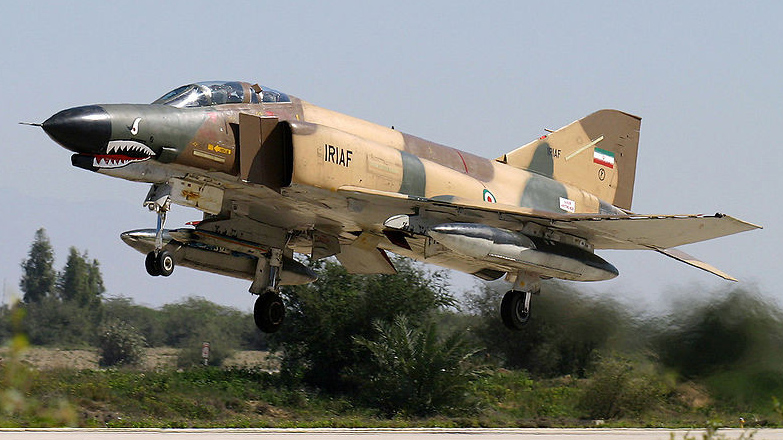The wars in Syria and Iraq feature long list of stakeholders that are connected to a tangled web of shaky alliances, tacit allowances and contradicting goals. Yet since Russia pulled its fixed-wing tactical fighters and attack aircraft out of Syria, the US appears to be enjoying less complex and volatile skies over the war-torn country.
Yet if anything this conflict has proven to be, it is unpredictable, and there are certainly many hands vying for control and influence if and when ISIS no longer exists as centralized threat to the region.
Iran in particular is deeply involved in both the fighting in Iraq and Syria. Iraq’s so called Popular Mobilization Forces are dominated by Shiite militias backed by Iran, which the US does not support.
Iranian advisors, fighters and airpower have supported these militias directly. This 60 Minutes report by Lara Logan gives a unique “on the ground” insight into how powerful these Iranian-backed forces have become. Iranian air missions into Iraq are not coordinated with the US-led coalition’s Combined Air Operations Center (CAOC), so at times over the past couple of years the skies over Iraq have been a little bit like a high school hallway where two schoolyard foes pass by one another at a safe distance.

In Syria, Iran’s long-time proxy, Hezbollah, is actively fighting for the Assad regime. Iran opened up their airspace to Russia, providing a vital air route during the rapid build-up to air operations from Moscow’s Syrian air base south of the port city of Latakia. Even Russia’s cruise missiles flew through Iranian flight corridors on their way to Syria from the Caspian Sea, with some of them even crash-landing on Iranian soil.
Now, with both sides rushing towards the outskirt of the ISIS capital of Raqqa (those being Assad’s military, with Russian and Iranian support, and the US coalition with its Syria Democratic Forces) it’s possible Iran will step in to provide fixed wing air support just as Russia did when it came to taking on anti-Assad forces in the country’s west.
Such a move would greatly complicate the American-led air war over Syria. It’s one thing to fly sporadic strikes from another country, and an entirely different thing to actually base jets in that country. Russia had a few dozen fighters and bombers in-country, and the skies over Syria became crowded and volatile. Considering that Russia’s aviators are a more predictable commodity than Iranian ones (especially those belonging to the IRGC), and relations between Russia and the US, although severely strained, are far more intimate than relations between the US and Iran, the constant presence of Iranian tactical jets over Syria could be downright volatile.
The US is clearly ramping up its air campaign in Syria, with greatly expanded drone operations out of Jordan and a US Carrier Strike Group attacking from Syria’s shore for the first time since the conflict began. The arrival of a US Carrier Strike Group was almost certainly made possible due to the greatly decreased Russian presence in the region. If Iran were to use Russia’s facilities, which are still manned and defended, it’s likely that striking from the Mediterranean would not remain such an attractive option for the US Navy. The positioning of Iranian fighters and attack jets in Syria (especially in western Syria, if that were to be the case) would also likely draw great concern from Israel, which has never had Iranian air power stationed so close to its borders.

The thing is, this hypothetical may actually become a reality. There have been reports and rumors that Iran has requested to fly 16 aircraft through Iraqi airspace on their way to Syria. These reports have not been corroborated with an official announcement, but the idea of Iran using its airpower in an expeditionary manner in Syria is interesting, to say the least. Not only would it have an impact on the Syrian conflict and the push against ISIS, but it would also signal a change in Iranian military strategy, and in their ability and willingness to project power abroad.
The presence of a full-on Carrier Strike Group off Syrian shores, and another one heading to the region soon, could be a catalyst for a response from the Assad-Russia-Iran alliance. In fact, we predicted something like this would occur—although from Russian origin, not Iranian.
It’s quite possible that these rumors and reports are false. But now that the conflict is accelerating on multiple fronts, and seeing that Russia has proved the model, and has a base totally ready from which to operate Iran’s aircraft, and that Iran has increasingly been more aggressive when it comes to their willingness to become involved in foreign conflicts, the idea of forward-deployed Iranian air power in Syria is well within the realm of possibility.
Contact the author Tyler@thedrive.com
